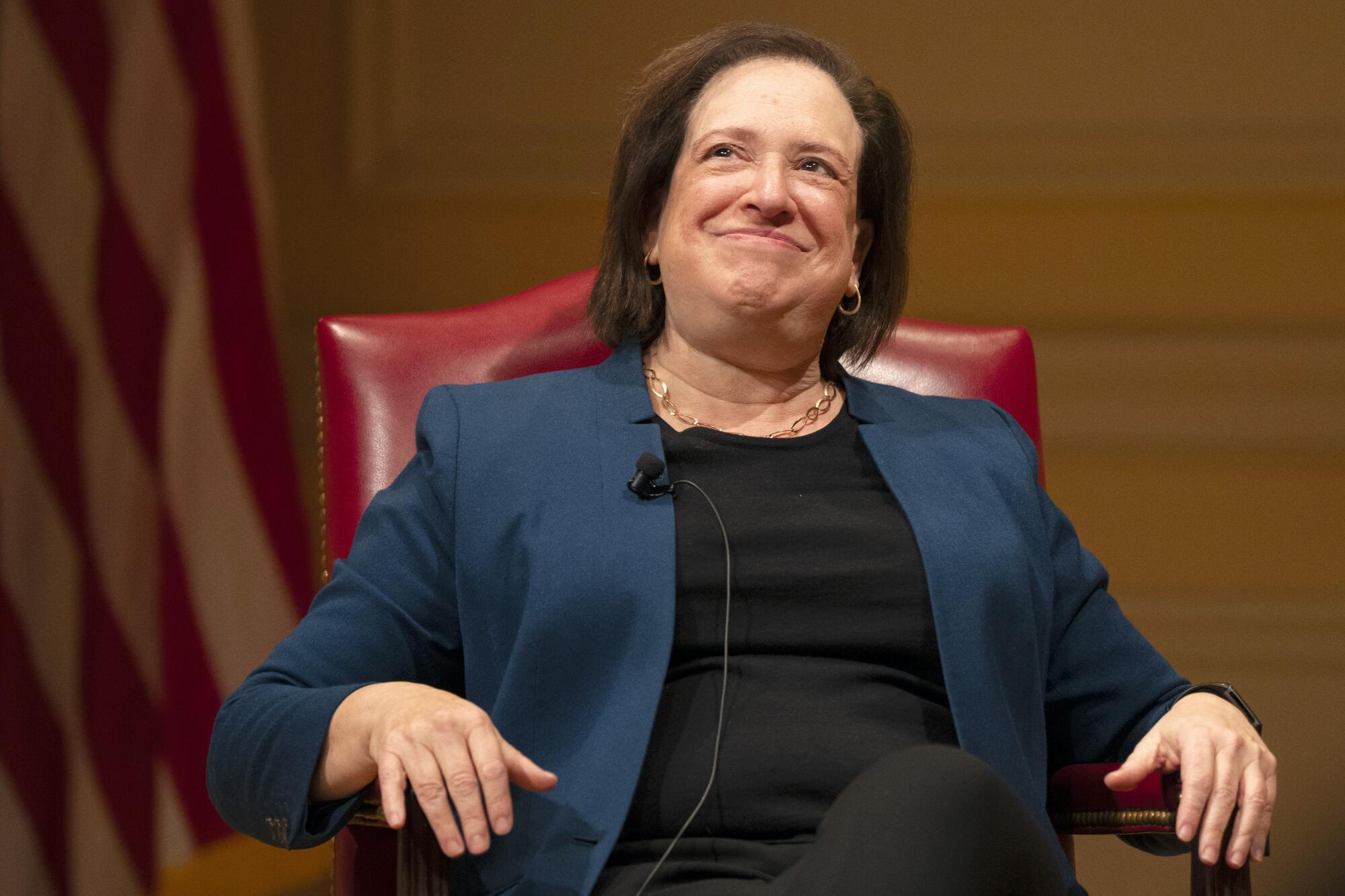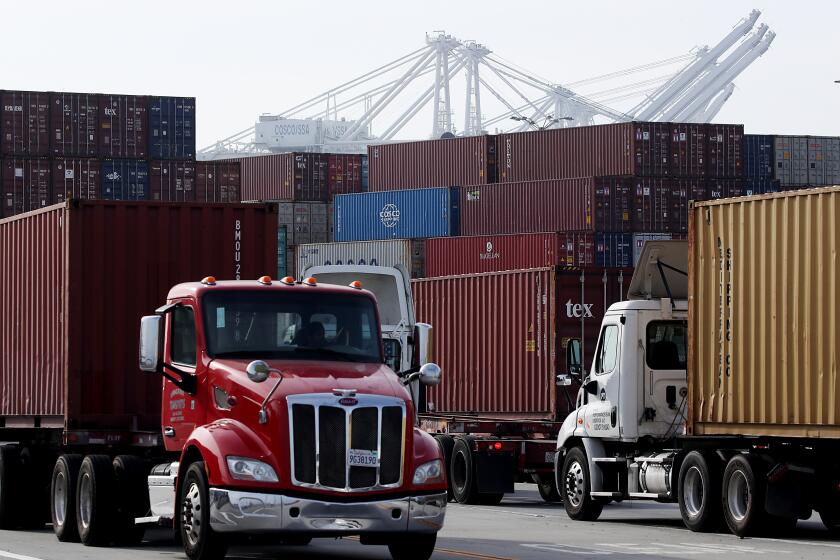
- Share via
A recent U.S. Supreme Court ruling will probably pave the way for more legal challenges — and potential setbacks — for California’s groundbreaking clean air rules and myriad other federal environmental protections.
In a 6-3 decision last week, the Supreme Court overturned the so-called Chevron doctrine, a long-standing legal precedent that instructed U.S. courts to rely on federal agencies to interpret ambiguous laws. By invalidating the legal doctrine, the nation’s highest court has effectively stripped power from federal administrative agencies, such as the U.S. Environmental Protection Agency, and handed more authority to U.S. courts to independently decide whether newly enacted rules are consistent with federal law.
The six justices voting to overturn the deference rule were appointed by Republican presidents, including Chief Justice John G. Roberts Jr., who wrote the majority opinion. The decision was repudiated by Justice Elena Kagan, who dissented along with Justices Ketanji Brown Jackson and Sonia Sotomayor — all of whom were appointed by Democratic presidents.
Aggressive and impactful reporting on climate change, the environment, health and science.
“What actions can be taken to address climate change or other environmental challenges?” Kagan asked. “What will the nation’s health-care system look like in the coming decades? Or the financial or transportation systems? What rules are going to constrain the development of A.I.?
“In every sphere of current or future federal regulation, expect courts from now on to play a commanding role.”
After years of political divisiveness and congressional gridlock, the U.S. EPA has been forced to use decades-old environmental laws to craft modern regulations to slow climate change and crack down on pollution from new industries. Legal experts say the ruling could have a chilling effect on ambitious federal rulemaking, which will now be subject to a federal judiciary filled with Trump appointees.
California voted to ban new diesel trucks at ports. Why did L.A. and Long Beach just add 1,000 more?
While California waits for the EPA to act, more than 1,200 trucks have obtained new registrations to move cargo at the ports of Los Angeles and Long Beach this year; 90% run on diesel.
This may also spell trouble for California’s ambitious rules for vehicle emissions, which have relied on Obama- and Biden-era interpretations of the Clean Air Act — a law last amended in 1990 that doesn’t even mention greenhouse gases.
With at least nine of California’s clean air rules awaiting EPA approval, the Supreme Court decision raises the stakes on the numerous court battles over the state’s zero-emission vehicle mandates and other emissions standards.
“While the courts are entitled to hear what the agency thinks, they don’t have to respect it,” said Julia Stein, deputy director for the Emmett Institute on Climate Change and the Environment at UCLA School of Law. “They’re open to adopt their own interpretation.”
The Supreme Court ruling could also have implications for the Clean Water Act, which regulates pollution into bodies of water.
The law applies to “navigable waters,” which has left uncertainty over whether habitats like wetlands and creeks are covered.
The potential for federal courts to alter environmental rules underscores the importance of states having their own laws on the books, Stein said.
“We have our own statutory scheme in California applied very robustly by state agencies here at home,” Stein said about water regulation. “So even if something were to happen at the federal level, we have a very robust backup at the state level to manage that.”
The landmark rule from South Coast AQMD would phase out more than 1 million natural gas-powered appliances, including those that heat swimming pools and hot tubs, and require them to be replaced with electric water heaters.
More to Read
Toward a more sustainable California
Get Boiling Point, our newsletter exploring climate change, energy and the environment, and become part of the conversation — and the solution.
You may occasionally receive promotional content from the Los Angeles Times.










